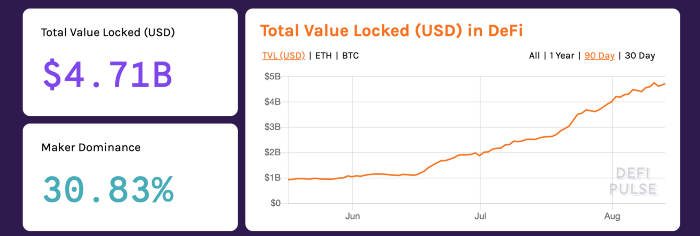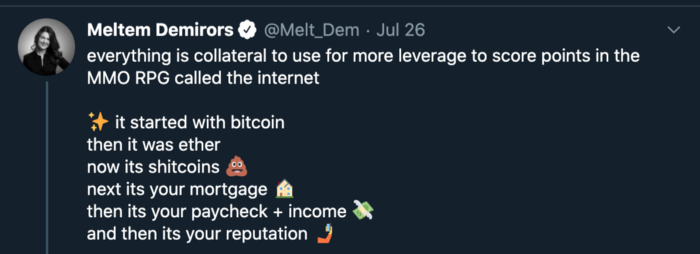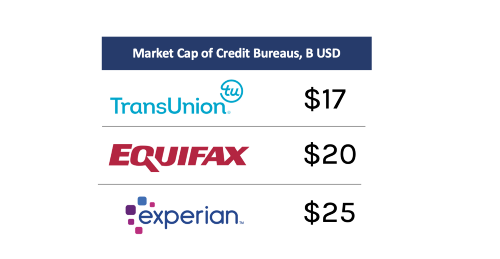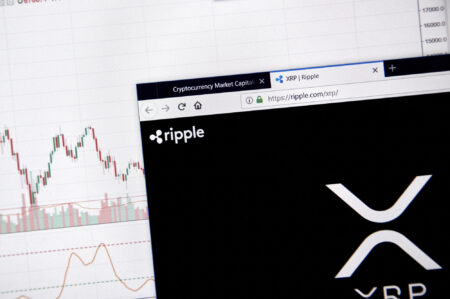Crypto lending is young, but a rapidly growing industry. A three-part series on the past, present and future of crypto-credit markets. In this article: New models for alternative credit in the world of "decentralized finance" (DeFi) today.
Cryptocurrencies have a number of unique attributes that make them fascinating for lending markets — blockchain networks operate 24 x 7 x 365, and subsequently markets do as well, transactions settle with finality, and the public ledger enables verification and attestation to the state of the network and the assets on the network. DeFi takes advantage of all of these attributes to create a real-time market for instant pricing and transfer of risk. At its core, credit is the act of buying and selling risk. And just like traditional credit markets, where different types of risk (duration, collaterallization level, creditworthiness of borrower, etc) command different market rates. And just like traditional markets have a yield curve, DeFi markets are creating their own yield curves.
Breaking Down What’s Happening in DeFi
Looking at DeFiRates.com — we can see lend and borrow rates differ widely across platforms like BlockFi and Celsius, which are centralized and coordinated by a trusted intermediary, and “DeFi” or less centralized borrowing protocols which are coordinated by smart contracts and programatically operated on-chain.

As you can see, the net interest margin (borrow — lend) on these platforms is quite healthy! We’ll talk a bit more about the DeFi lending platforms (in purple) shortly. Centralized service providers like BlockFi, CoinList, and Coinbase tend to have lower rates and higher NIMs than DeFi platforms, likely due to increased competition among DeFi platforms, which are all vying for limited crypto collateral and want to attract more users and collateral by offering higher rates or other incentives like distribution of governance tokens or revenue share tokens.
In terms of size, as of August 13, there is nearly $5B of crypto collateral “locked” in DeFi as reported by DeFiPulse.com, of which roughly 1/3 is in Maker, the original crypto-collateralized lending protocol, and the remainder is spread across newcomers like Compound, Balancer, Aave, and others.
Side note: there’s an active prediction market on how much value will be locked in DeFi by the end of the year — Poly.market is currently running a scalar prediction market which you can see here. Note I’m an investor in the platform, and I’ve also been long this market since $3B back in July. Markets on markets, y’all.

On the more “centralized” or CeFi side, according to CredMark, at the end of Q1 2020, there was $5.1B in crypto collateral on $2.6B of active debt. Given the crypto market cap was roughly $250B, that’s a very low 2% of crypto in circulation being used as collateral on these platforms. However, given Coinbase’s recently announced plans to offer USD loans to clients who have crypto on their platform, we anticipate every crypto platform will start to resemble a bank.
Quarter-over-quarter, crypto lending markets have grown 40–50%, highlighting the tremendous opportunity to extend credit across the ecosystem in new ways. The charts above don’t cover rates offered by desks like the ones at CoinShares, Genesis Capital, and Blockchain.com. Nearly every trading desk in the industry is active in this market in some way, shape, or form today, making it challenging to estimate the actual size of the market. To date, the majority of traditional lending has been focused on applying leverage to trading. However, this is quickly changing as more assets become “tokenized” and take on the attributes of crypto-assets.
Everything is Collateral, Now Give Me the Leverage
As these markets continue to grow, platforms differentiate by the rates they offer as well as the types of collateral they accept. As more assets become “digitized”, we see more opportunities to obtain leverage with these assets. Already companies are pioneering these new approaches. For example:
- CoinShares was a member of the consortium which launched DGLD, a digital gold product, which can now be used as collateral on multiple platforms, effectively making physical gold useful as digital crypto-collateral to borrow against.
- Figure is digitizing HELOCs (home equity line of credit) and making them tradable and transferrable on their private blockchain, and likely will sell asset management products to homeowners who “liquidate” their home equity to make an unproductive asset — your home equity — a productive asset against which you can easily obtain leverage and margin.
- ShuttleOne is doing this with Letters of Credit in the port of Singapore, and using synthetic dollar stablecoins like Dai and dollar-backed coins like USDC to extend credit to companies and merchants against tokenized LoCs representing inventory in port. Recently, they submitted a proposal to make these tokenized inventories available as collateral via the Maker protocol.
- Centrifuge is building a platform to turn any asset into “collateral value tokens.” This could include collectibles like a 1978 Jaguar XJS or a baseball card collection into non-fungible tokens. Platforms like Rally Road and Nifty Marketplace are already doing this for collectibles and collectible art.
I am still working on getting our desk to extend me credit against my reputation, but so far, no such luck. But, it looks like it’s just a matter of time until everything becomes crypto-collateral. After all, all a market needs is buyers and sellers. And depending on the risk reward tradeoffs… maybe this isn’t the worst bet you could make?

Interesting to note there is already a credit card, Karat, that came out of stealth last month and is offering credit to social media influencers based on their follower counts. So while I might be waiting some time to lever up 100x on my “reputation”, we’ll go back to discussing crypto-collateralized loans.
While rates are all over the place today, over time, we expect rates across platforms to become more uniform as there is currently very little differentiation between one platform vs another, except for perhaps the operational and regulatory wrapper put around the lending experience.
As we have seen from the rapid rise, and subsequent fall of alternative lending unicorns in the 2010s (see Lending Club for a prime example), a better wrapper isn’t always a defensible differentiator long-term. As more crypto holders who are fundamentally long digital assets look for ways to generate income on passive assets, we expect the asset management side of the lending market to grow exponentially.
As the crypto credit segment grows across consumer, SME, and enterprise use cases, extending useful and intuitive products and services will be an important driver of industry growth. Already we are working with several companies to explore providing a yield-bearing crypto account fueled by our capital markets desk. We announced the first such partnership with Kingdom Trust, a US custodian with $13B in AUC, in late July. Already several FinTechs including Square and PayPal are pushing into the crypto space, and Visa, the largest payment network in the world, continues to invest in building its crypto capabilities.
As investors look at their portfolios during these turbulent times, perhaps they will see opportunities to squeeze useful leverage out of their crypto holdings. As these markets continue to grow, platforms differentiate by the rates they offer as well as the types of collateral they accept. If some of it looks like straight up gambling, it’s because … it is.
While over-collateralized and fully collateralized loans have taken off in every part of the crypto ecosystem, from most regulated to least, from Wall Street to far-flung corners of the internet, our winding path has led us back to the sweet, sweet nectar of risk. Enter under- and un-collateralized lending.
But is There Actually Anything New Here?
Going back to where we started, there is truly nothing new under the sun. While the crypto lending ecosystem has blossomed from its humble beginnings to a multi-billion dollar market, one of the common criticisms is that borrowers who need access to capital most often are least likely to have 100–300% of the loan amount at their disposal in easily marketable and salable assets like cryptocurrencies or digital HELOCs or digital gold. While speculation is all good fun, we should try to like, solve real problems for real people?
Looking at the current lending lifecycle, as illustrated above, all of the many steps in the process above have created room for many intermediaries to insert themselves into the process and have added complexity, friction, and cost to the lending market.

At its core, the problem that the crypto community needs to solve for is that of pricing and managing risk. In traditional lending, resolving this problem was easy! Before ever lending a dollar, most lenders utilize credit scores and other backward-looking data about a person and their financial history to gauge their riskiness as a borrower and to make decisions accordingly.
There are now hundreds of VC-backed SaaS companies working on every part of the credit lifecycle, in every permutation, and in every credit market. With the advent of embedded finance, we expect more and more widely used platforms will also get into the business of credit and banking, and the gap between crypto credit and alternative credit to get narrower and narrower. There’s a whole generation of crypto credit SaaS companies just waiting to emerge!
Data is Still the Lifeblood of Credit Markets
Credit data is big business. Today, the three primary credit bureaus in the US are all valued at over $15B, and the largest private company, Credit Karma, is valued at $4B. While credit scoring is a highly regulated space, as evidenced by the US FICO standard, there is a lot of regulatory push for fairer, forward-looking credit scoring methodologies given how much cost of capital can impact financial outcomes and contribute to wealth inequality, particularly unbanked or underbanked consumers.

Credit lifecycle management is a crowded space, with banks and startups all vying to capture a wide range of data about borrowers, their financial goals, and their financial health in order to sell a broader range of high margin services. By consuming ever-increasing amounts of data, financial institutions might have the ability to underwrite consumer credit in real-time, on an as-needed basis. However, we expect that the experiments in crypto will be informative to what’s possible when you re-imagine credit without legacy banking technology constraints.
The credit score of an individual standardizes their riskiness as a borrower and is therefore used to dictate the rate at which they can borrow. High risk equals higher rates. By papering a lot of legal contracts, gathering data, and creating avenues for legal recourse, such as wage garnishment or property seizure, lenders can mitigate the scale of loss and increase the probability of recovering some portion assets. It would not be very crypto friendly, however, to replicate the same institutions of the past to build solutions for the future (although they will definitely try… as they have done in alternative lending!)
After all, surely there is really no point to all of this if we replicate the fees, middlemen, centralization and existing barriers to financial access?
Arguably the last two decades of FinTech innovation have introduced little structural change to markets, but rather, have created more streamlined, standardized, digital processes and organized marketplaces where demand and supply are aggregated more efficiently. Startups have innovated around the edges of this flow, perhaps by digitizing one step of the process — say the application process — and allowing a borrower to submit one set of applications to many lenders in order to shop for the best rate.
You cannot get a credit facility on an as-needed basis, on your phone, within 1 minute, using your assets as collateral. Sure, maybe eTrade will let you open a margin account, but you can’t take that leverage with you to Binance to buy bitcoin.
And if it’s 8pm on a Saturday and you need to move some money around, sorry, the shop doesn’t open till 9am on Monday, and your request might not get processed until the next day. However, there’s a reason the “stuff in the middle” exists — it’s how lenders manage risk and minimize loss of principal.
So Can We Have Credit Without Intermediaries?
Our team has been conceptualizing a future where under-collateralized lending becomes more prevalent and the crypto rate market expands beyond today’s fully collateralized, riskless rate market into an undercollateralized, risk-driven rate market where loans are priced based on the facts and circumstances. Effectively, what has historically been one credit market fueled by trading leverage will fragment into a massive credit market with all sorts of different instruments, and where collateral is hyperfluid, meaning there is less capture at the product or platform level because collateral is not constrained to one dedicated venue and switching costs are low.
So, how do you defend against asset volatility and loan default without also implementing backward-looking credit scoring and onerous identity requirements in the form of KYC / AML rules? The first approach is to re-think borrower analytics and credit scoring to minimize loss and attempt to enhance principal recovery. We outlined the approach of anonymous, over-collateralized loans, but hybrid approaches here might include:
- Black box credit score calculation, where a zero-knowledge proof takes in a variety of data points and calculates a final score, obfuscating the underlying data and the calculation methodology. Notably, X-Margin has built this for trading margin but could just as easily apply their technology to consumer or corporate lending. This could remove some of the discriminatory bias from current lending platforms which rely on human judgement.
- New credit scoring models to produce new types of credit data combining on-chain data about crypto wallets and the relationships between them to establish users’ net holdings and spending data, or trust scoring models like that being pioneered by UTU which combine a variety of data about users, including social media data and their social network, to create a “score.”
- Progressive credit scoring where lenders reduce collateral requirements proportional to the borrower’s repaid interest rates. Every time a borrower repays a loan, the subsequent loan is offered on more attractive terms. This rewards “good behavior” and incentivizes continued “good behavior” to maintain access to a credit facility.
- Building a credit scoring data network, like Spring Labs who are building a new type of credit bureau but with more privacy guarantees and more data security, especially around data sharing between institutions beyond just a FICO score.
Ultimately, keeping crypto credit “decentralized” or at least “disintermediated” will require a solution to the problem of understanding, managing, and mitigating risk. This is where we’re looking in the future, and where we ultimately believe massive markets will be created!





